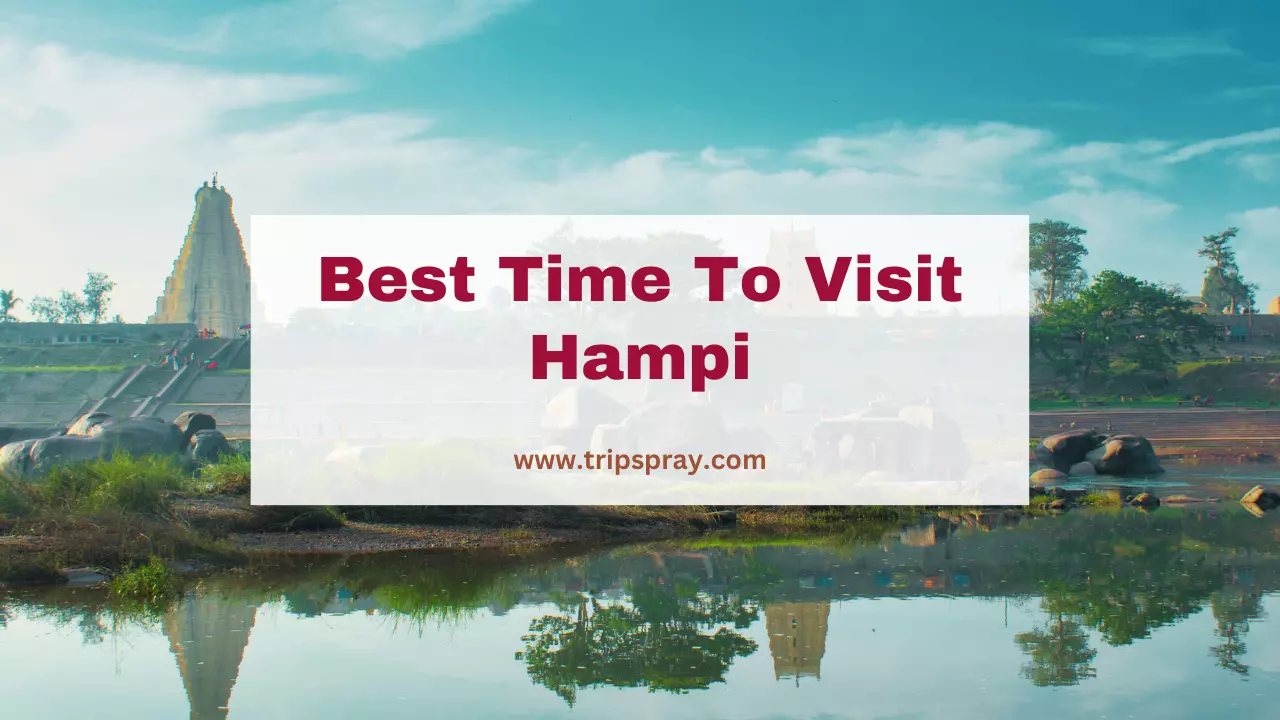Exploring the Ancient Ruins: The Best Time to Visit Hampi
Hampi, a UNESCO World Heritage Site located in the southern part of India, is a mesmerizing destination that takes you on a journey through time. Steeped in history, this archaeological wonder boasts sprawling ruins, majestic temples, and a unique landscape that transports visitors to a bygone era. While Hampi is a year-round destination, choosing the best time to visit can enhance your overall experience. This article will delve into the various seasons and events that influence the ideal time to explore this historic site.
Winter Wonderland: October to March
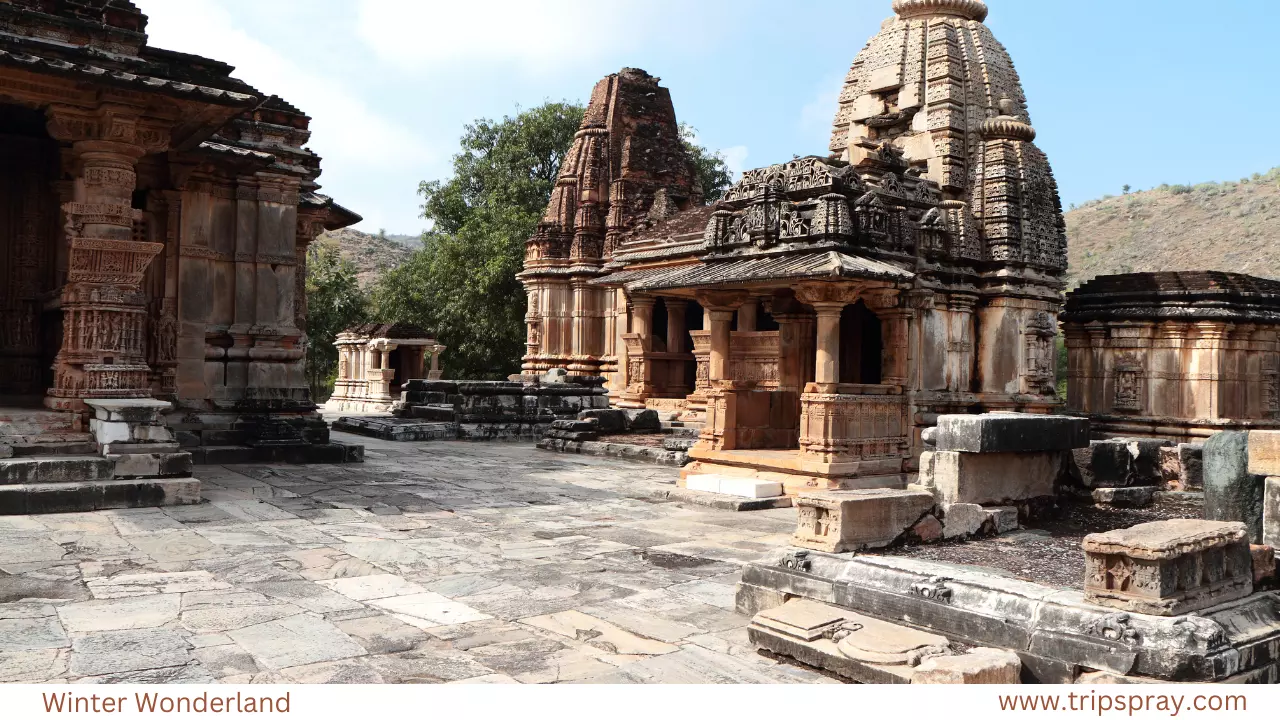 The winter months, spanning from October to March, are widely considered the best time to visit Hampi. During this period, the weather is pleasantly cool and comfortable, making it ideal for exploration. The daytime temperatures hover around 25-30 degrees Celsius, providing a perfect climate for wandering through the extensive ruins without the discomfort of excessive heat.
The winter months, spanning from October to March, are widely considered the best time to visit Hampi. During this period, the weather is pleasantly cool and comfortable, making it ideal for exploration. The daytime temperatures hover around 25-30 degrees Celsius, providing a perfect climate for wandering through the extensive ruins without the discomfort of excessive heat.
The dry and mild winter weather also ensures you can explore every nook and cranny of Hampi without worrying about sudden downpours or scorching temperatures. The clear skies during this season offer stunning views of the iconic boulder-strewn landscape, and the gentle breeze adds to the overall pleasant atmosphere.
Festive Vibes: November to February
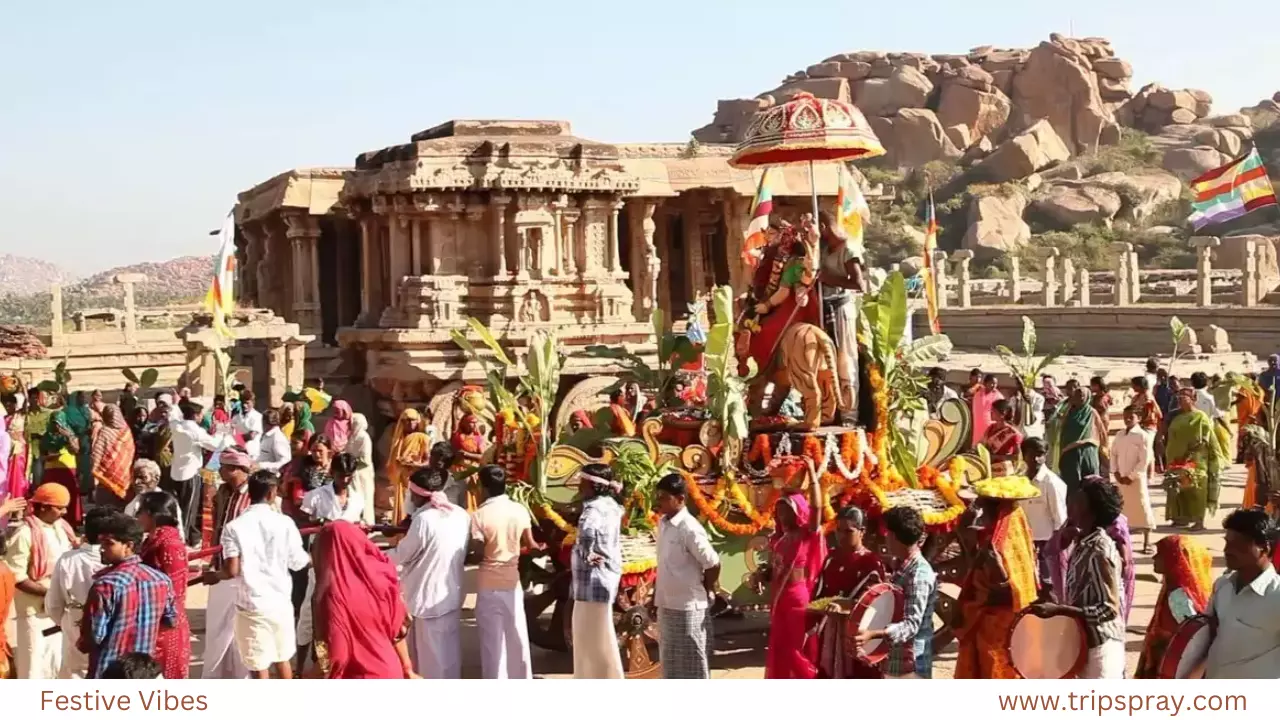 If you want to experience Hampi’s vibrant culture and favorable weather, plan your visit during the festival season. The Hampi Utsav, usually held in November, is a grand celebration showcasing the region’s rich heritage. The festival features cultural performances, traditional music, dance, and a mesmerizing sound and light show against the backdrop of the ancient ruins.
If you want to experience Hampi’s vibrant culture and favorable weather, plan your visit during the festival season. The Hampi Utsav, usually held in November, is a grand celebration showcasing the region’s rich heritage. The festival features cultural performances, traditional music, dance, and a mesmerizing sound and light show against the backdrop of the ancient ruins.
The Virupaksha Car Festival, which takes place in February, is another highlight. The town comes alive during this event with processions, rituals, and a general sense of festivity. Travelers can immerse themselves in the local traditions and witness the spectacular sight of the elaborately decorated chariot being pulled through the historic streets of Hampi.
Exploring the Temples: January to March
 For those interested in Hampi’s religious and architectural aspects, the period between January and March is particularly appealing. During these months, the weather remains pleasant, and the clear skies allow for an in-depth exploration of the numerous ancient temples that dot the landscape. The Virupaksha Temple, dedicated to Lord Shiva, and the Vittala Temple, known for its iconic stone chariot, are among the must-visit sites.
For those interested in Hampi’s religious and architectural aspects, the period between January and March is particularly appealing. During these months, the weather remains pleasant, and the clear skies allow for an in-depth exploration of the numerous ancient temples that dot the landscape. The Virupaksha Temple, dedicated to Lord Shiva, and the Vittala Temple, known for its iconic stone chariot, are among the must-visit sites.
January marks the Hampi Dance Festival, attracting classical dancers and enthusiasts nationwide. Against the backdrop of the illuminated ruins, classical dance performances create a magical ambiance, blending history and art seamlessly.
Avoiding the Monsoon Mayhem: June to September
 While the monsoon season, spanning from June to September, brings a lush green cover to the region, there are other recommended times to visit Hampi. The heavy rains can lead to flooding in certain areas, making exploration difficult and potentially dangerous. The slippery boulders and muddy trails may limit access to some of the more remote sites, and the risk of landslides must be addressed.
While the monsoon season, spanning from June to September, brings a lush green cover to the region, there are other recommended times to visit Hampi. The heavy rains can lead to flooding in certain areas, making exploration difficult and potentially dangerous. The slippery boulders and muddy trails may limit access to some of the more remote sites, and the risk of landslides must be addressed.
However, you are an avid photographer and enjoy the dramatic beauty of landscapes under overcast skies. In that case, the monsoon season might offer unique opportunities for capturing the ethereal charm of Hampi. Just be prepared for occasional disruptions and plan your itinerary accordingly.
Nature’s Palette: Post-Monsoon Blooms
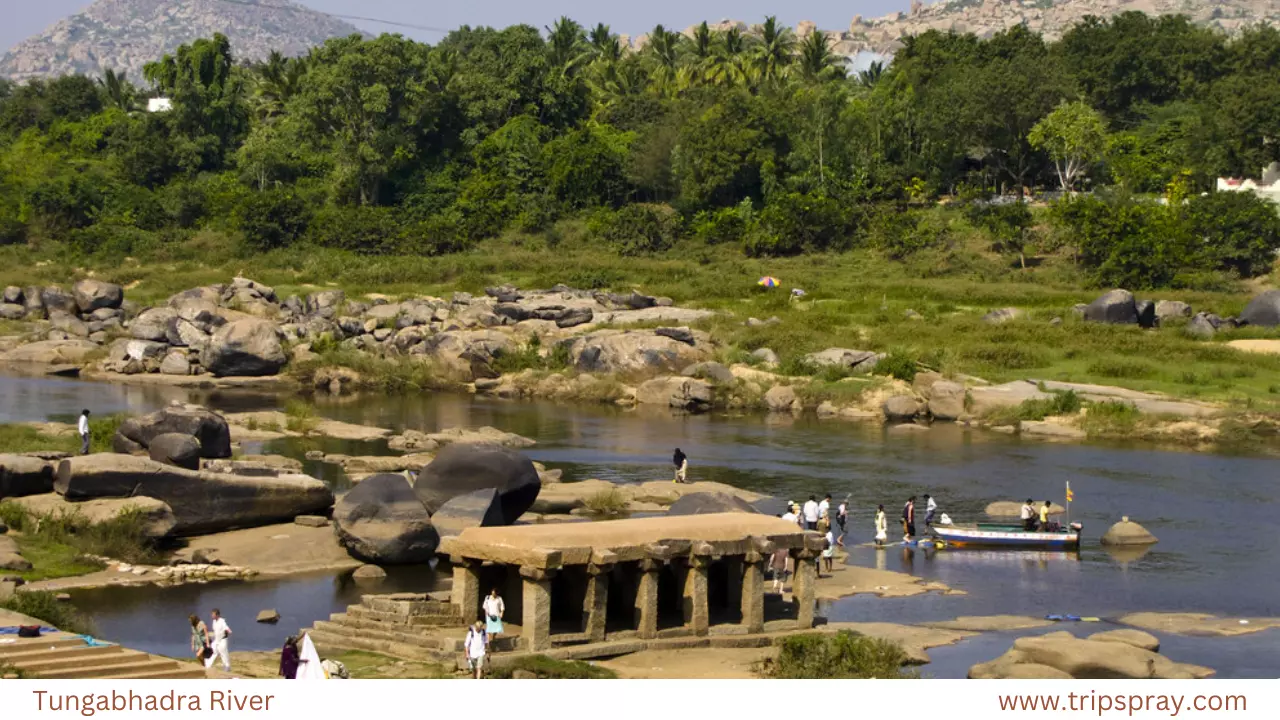 If you can’t resist the allure of blooming landscapes, consider visiting Hampi in the months following the monsoon season, around October. The vegetation comes alive with vibrant hues, and the air is filled with the fragrance of fresh blossoms. This period offers a unique blend of post-monsoon greenery and clear skies, providing a picturesque backdrop for your exploration.
If you can’t resist the allure of blooming landscapes, consider visiting Hampi in the months following the monsoon season, around October. The vegetation comes alive with vibrant hues, and the air is filled with the fragrance of fresh blossoms. This period offers a unique blend of post-monsoon greenery and clear skies, providing a picturesque backdrop for your exploration.
The Tungabhadra River, which flows through Hampi, also swells during the monsoon, creating scenic riverbanks and adding an extra layer of beauty to the already enchanting surroundings. Boat rides along the river become a tranquil experience during this time.
Beating the Summer Heat: April to June
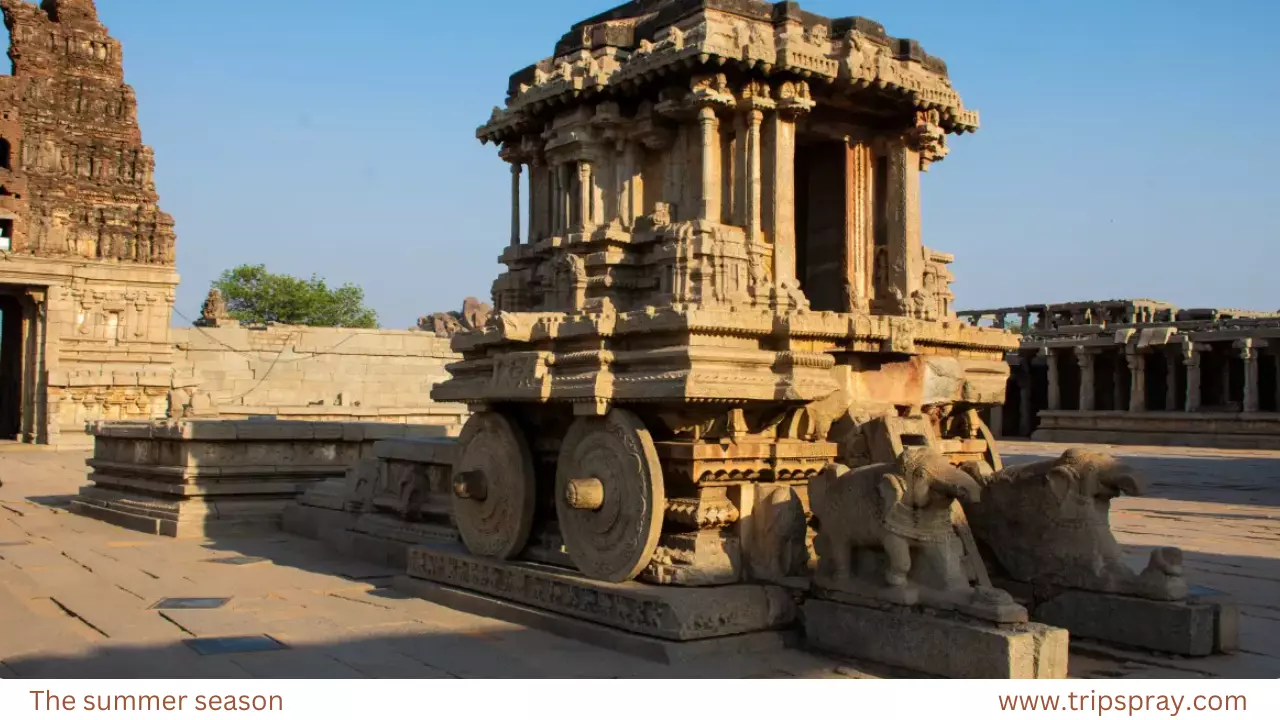 The summer months in Hampi, from April to June, bring scorching temperatures that can soar well above 35 degrees Celsius. While the landscape remains striking, the intense heat can make outdoor exploration challenging, especially during the peak afternoon hours. It’s advisable to plan your visits to the ruins either early in the morning or late in the afternoon to avoid the brunt of the sun.
The summer months in Hampi, from April to June, bring scorching temperatures that can soar well above 35 degrees Celsius. While the landscape remains striking, the intense heat can make outdoor exploration challenging, especially during the peak afternoon hours. It’s advisable to plan your visits to the ruins either early in the morning or late in the afternoon to avoid the brunt of the sun.
If you brave the summer heat, carry plenty of water, wear comfortable clothing, and use sun protection. Remember that some sites may be closed or have restricted access during these months due to the extreme weather conditions.
Conclusion:
Choosing the best time to visit Hampi depends on your preferences and priorities. The winter months offer comfortable weather, while the festival season adds a cultural dimension to your experience. If you’re a photography enthusiast, the monsoon season may provide unique photo opportunities despite the challenges. Meanwhile, summer visits require careful planning to beat the heat.
Regardless of when you decide to explore Hampi, the rich historical and cultural tapestry of this UNESCO World Heritage Site promises an unforgettable journey. Whether you’re an architecture enthusiast, a history buff, or simply a traveler seeking a unique adventure, Hampi welcomes you with open arms, inviting you to step back in time and marvel at the wonders of a civilization long gone. Contact us for more travel tips and recommendations.
